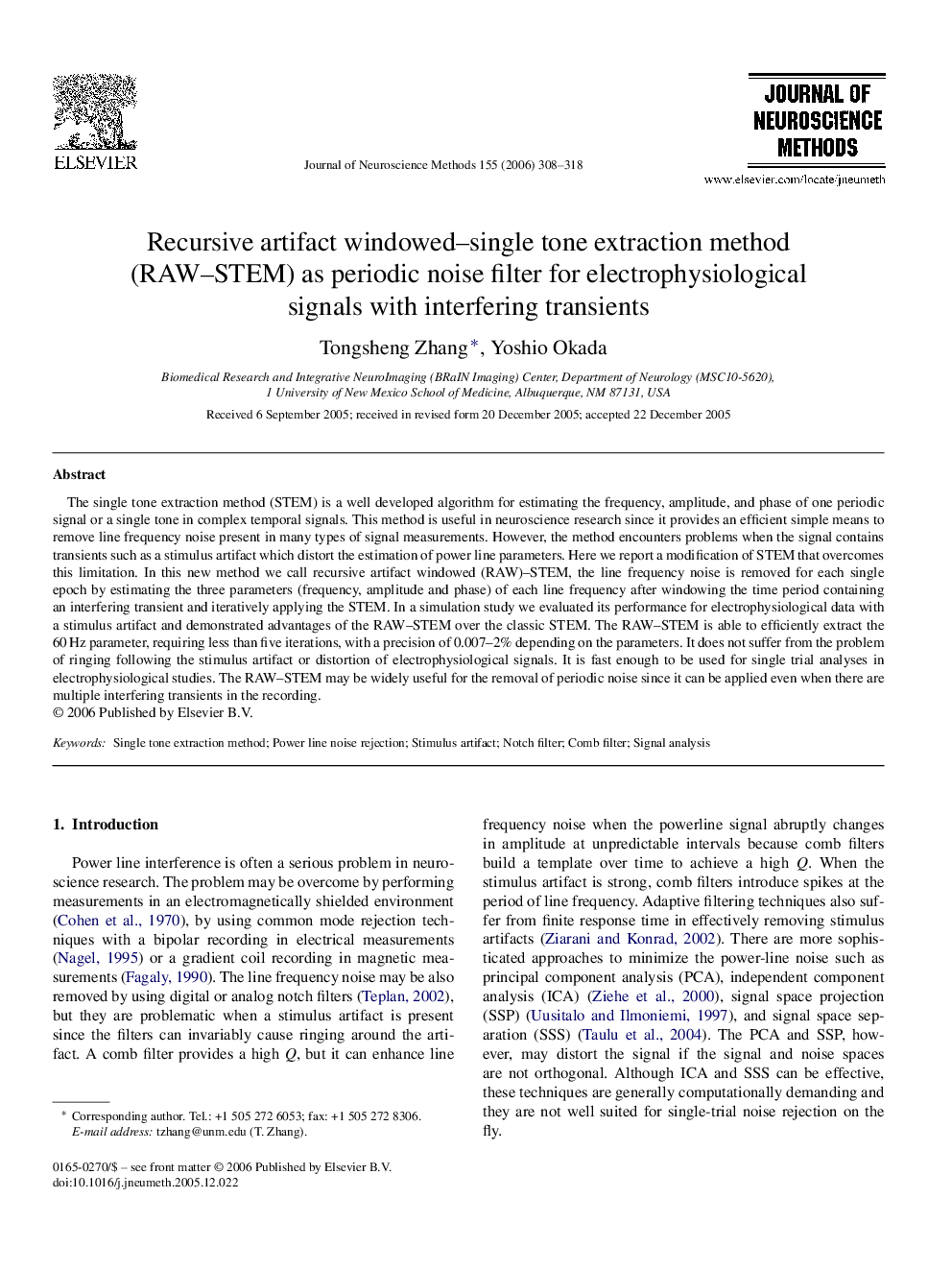| Article ID | Journal | Published Year | Pages | File Type |
|---|---|---|---|---|
| 4336789 | Journal of Neuroscience Methods | 2006 | 11 Pages |
The single tone extraction method (STEM) is a well developed algorithm for estimating the frequency, amplitude, and phase of one periodic signal or a single tone in complex temporal signals. This method is useful in neuroscience research since it provides an efficient simple means to remove line frequency noise present in many types of signal measurements. However, the method encounters problems when the signal contains transients such as a stimulus artifact which distort the estimation of power line parameters. Here we report a modification of STEM that overcomes this limitation. In this new method we call recursive artifact windowed (RAW)–STEM, the line frequency noise is removed for each single epoch by estimating the three parameters (frequency, amplitude and phase) of each line frequency after windowing the time period containing an interfering transient and iteratively applying the STEM. In a simulation study we evaluated its performance for electrophysiological data with a stimulus artifact and demonstrated advantages of the RAW–STEM over the classic STEM. The RAW–STEM is able to efficiently extract the 60 Hz parameter, requiring less than five iterations, with a precision of 0.007–2% depending on the parameters. It does not suffer from the problem of ringing following the stimulus artifact or distortion of electrophysiological signals. It is fast enough to be used for single trial analyses in electrophysiological studies. The RAW–STEM may be widely useful for the removal of periodic noise since it can be applied even when there are multiple interfering transients in the recording.
